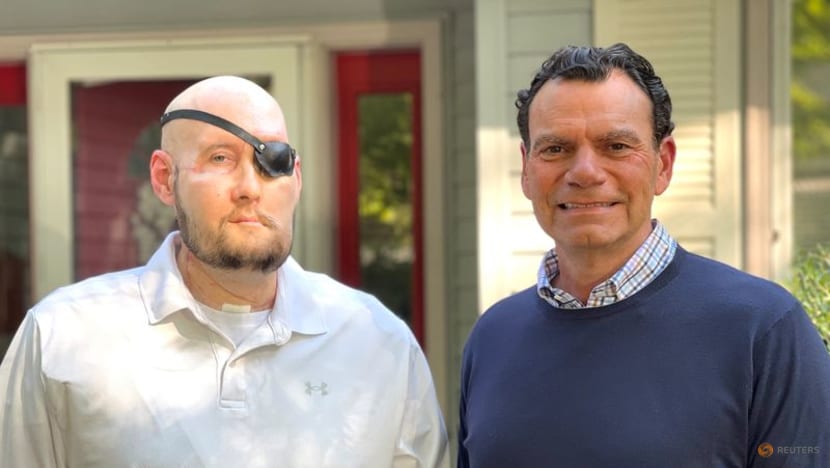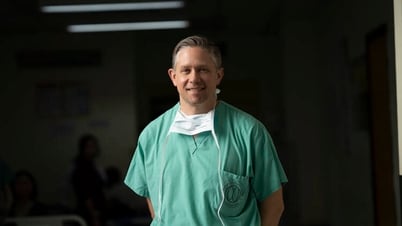Six months after the surgery, which was performed during a partial face transplant, the transplanted eye has shown good signs, including well-functioning blood vessels and a promising-looking retina, according to the surgical team at NYU Langone Health.

The first total eye transplant patient in the US. Photo: Reuters
“Our eye transplant is a huge step forward, something that has been thought about for centuries but never done,” said Dr. Eduardo Rodriguez, who led the research team. Until now, doctors have only been able to transplant the cornea, the clear front layer of the eye.
The recipient of the eye, Aaron James, is a 46-year-old Army veteran from Arkansas who survived a work-related high-voltage electrical accident that destroyed the left half of his face, nose, mouth and left eye.
The transplant surgery took 21 hours. Initially, doctors intended to include the eyeball as part of a face transplant for cosmetic reasons. “If some form of vision restoration occurs, that would be great, but… the goal is for us to perform the technical surgery and let the eyeball survive,” Rodriguez said, adding that whatever happens in the future will be monitored.
Currently, the implanted eye does not communicate with the brain via the optic nerve.
To encourage healing of the connection between the donor and recipient optic nerves, surgeons harvested adult stem cells from the donor's bone marrow and injected them into the optic nerve during the transplant, hoping they would replace damaged cells and protect the nerve.
Transplanting a living eyeball would open up many new possibilities, even if vision is not restored in this case, Rodriguez said.
Other research groups are developing ways to connect neural networks in the brain to the unseen eye by inserting electrodes to enable vision, he said. “At this point, I think we’re pretty happy with the results we’ve been able to achieve,” he said.
Hoang Ton (according to Reuters)
Source



![[Photo] Top players gather at the 2025 Nhan Dan Newspaper National Table Tennis Championship](https://vphoto.vietnam.vn/thumb/1200x675/vietnam/resource/IMAGE/2025/5/23/9ad5f6f4faf146b08335e5c446edb107)


































































































Comment (0)